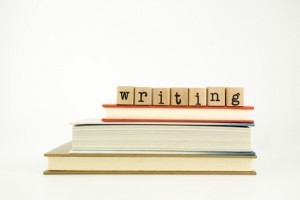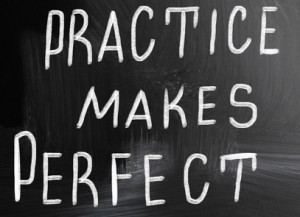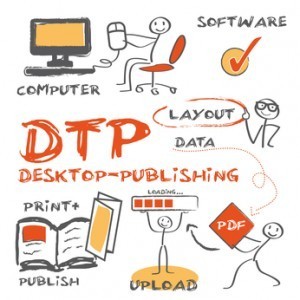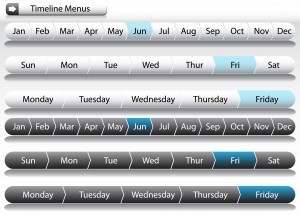Ruth Ford Elward's Blog, page 8
December 23, 2014
The Difference between First Person Narrative and Third Person Narrative
For freely offered writing Resources go to RuthFordElward.com
Many people become confused when trying to decide whether they should write in First Person or Third Person, let alone know what the difference is. To explain, the first or third person narrative denotes from whose view or perspective the writing is being told.
When you write in the first person, you use personal pronouns such as we, I, me, and us, as well as the possessive pronouns mine, my, our, and ours. On the other hand, if the story is narrated using the third person format, the pronouns used are she, he, it, they, and them, together with the possessive pronouns hers, his, its, their, and theirs.
A good way to remember this is to picture the scene with a television camera in the room. In First Person, the camera is on the ground floor shooting from the main character’s perspective. Everything that they see, the camera sees….and nothing more. With Third Person writing, the ‘camera’ is tracking from above, shooting from the side, and capturing angles from multiple characters as they act and interact.
Both types of writing have their pros and cons. That is the reason why you should choose the appropriate perspective for different types of writing genres.
December 21, 2014
Ruth’s Book Review on Gone Girl
For freely offered writing Resources go to RuthFordElward.com
GONE GIRL by Gillian Flynn
I am still having goosebumps after reading Gone Girl by Gillian Flynn. From the moment I finished it, it got me reeling all over again, making me want to read the book once more.
The story has a lot of harrowing twists and turns and completely astounding shockers that I didn’t know which to believe anymore.
I liked that this novel not only involved murder investigations, but it also featured a story about marriage – the troubles that couples usually encounter in their everyday lives, the secrets that separate them and the unspoken agreements that bring them together.
Told in alternating chapters, Flynn effectively demonstrated a haunting mystery that makes readers think “who has really done it?” and “what happens next?” A highly recommended read!
December 20, 2014
Ruth’s Book Review on Breach of Power
For freely offered writing Resources go to RuthFordElward.com
Chuck Barrett’s BREACH OF POWER
From start to finish, Chuck Barrett didn’t disappoint with this stunning political thriller, Breach Of Power. A story about locating the lost treasures of the past, that brings forth extreme danger to the highest-ranking official in the U.S. Government.
Jake Pendletton is tasked to uncover & discover the mystery behind a journal chronicling the location of the “treasures” but soon he discovers that he isn’t the only one after the book.
Breach of Power is a gripping book that contains twists and turns, an exciting plot that keeps the readers turning the pages. I liked how Jake & his partner Francesca, got themselves entangled into sticky & perilous situations and how the mysterious murder kept me guessing until the end. Another great read from Barrett!
December 19, 2014
Fabric Depot
What a find! It’s 49,000 sq feet of space filled with everything imaginable for a sewing project. Can’t beat it, check it out on line or visit the store
#fabricdepot
Fabric Depot

December 17, 2014
Voice….You Have One….Use it
For freely offered writing Resources go to RuthFordElward.com
On a general note, the voice (the way that you write) can either be active or passive. Active voice is used when the person or the subject of the sentence is the doer of the action.
While the active and passive voices are just reformations of the sentence in different forms, the person who delivers the message or the person to whom the message is delivered play a huge role in how that sentence is formed. This is particularly true when one is writing a book or a short story.
A good rule of thumb for identifying a passive or an active voice, is to see if any of the following words have been used in describing the action taking place: is, an, are, was, were, has, had, have, be, been, being, looks, says, feels, seems. These are commonly referred to as ‘helping verbs’. You will find they weaken the sentence structure and tend to multiply in passively worded sentences.

If one is writing a book in which a narrator is presenting, then it should be written in the first person as he/she is describing what they see or saw. For example, if the writer witnessed a horrible train accident, the sentence formation would be something like: “I saw people who were injured and dead”. If the writer is directly communicating with the reader, taking for example in a self-help book, the reader must believe what the writer is conveying. The writer should thus make use of the sentence in the second person and write: “If you ever witness an accident, this is what you should do…” This helps in having a clear focus on the reader as the reader understands that he too is an active part of what he/she is reading.
December 10, 2014
Good Writing Technique
For freely offered writing Resources go to RuthFordElward.com
The way we express ourselves while writing indicates our writing style, our approach, and our attack. In reality, there really is no standard style that writers abide by. However, there are two major elements that should be present for a writing style to be tagged as effective.
The first is readability which refers to the use of words, phrases, sentences, and paragraphs that convey ideas and facts clearly.
The second is grace, grace points to the use of proper words, phrases, sentences, and paragraphs in order to create a flowing writing style that will sustain the reader’s interest and attention.
Good writing style relays ideas and other information effectively. Good writing style helps the reader move easily from one paragraph to another. While on the other hand, a poor style is dreary and usually confusing.
• Write in comprehensive and coherent paragraphs. A coherent paragraph is composed of sentences that all connect to one fundamental idea. The initial sentence should be the topic sentence which means that it has to announce the main theme that will link all the following sentences together. Every sentence should be designed in such a way that they develop sensibly from the previous one. Some writers use phrases and words to connect the next sentence from the previous one to make a logical interconnection.
• A good paragraph is neither long nor short. Refrain from making paragraphs that are comprised of only a single sentence. And, if you accidentally created a paragraph that is a half-page in length, break it into several sentences.
• For beginners, try to start most of your sentences with the subject, instead of an adverb, a prepositional phrase, or a clause. Expert writers can get away with this style but if you are just starting to write a few pages, it is safe to follow the norm before you experiment.
• Avoid expressing an idea with too many words. Try to articulate an opinion, a fact, or an argument as concisely as possible. Professional writers usually follow this principle. Exceedingly long sentences can hide the writer’s actual meaning and slow down the reader. In order to keep sentences short, cease from using dependent clauses. If a sentence comes out as seemingly stiff and difficult to follow, count the number of dependent clauses.
• Refrain from using empty phrases such as ‘in general’, ‘basically’, ‘I think’, ‘in my opinion’, to name a few. In addition, do not overuse your adjectives. Adjectives can provide clarity and make a sentence more interesting, especially when used sparingly.
December 3, 2014
What does it MEAN? Common Writing Terminology
For freely offered writing Resources go to RuthFordElward.com
Common Writing Terminology (the following will give basic understanding but not complete definitions)
• About the Author
The part of a publication that contains pertinent information about the author, this is usually composed of a few paragraphs to an entire page normally written in the third person.
• Agent (Literary Agent)
An individual who promotes written works to different publishers, they earn through commissions from the deals that they make. Their commission commonly ranges from 10 to 20%.
• All Rights Reserved (Wikipedia)
It indicates that the copyright holder reserves, or holds for their own use, all the rights provided by copyright law, such as distribution, performance, and creation of derivative works; that is, they have not waived any such right.
• Allegory
This pertains to a story-writing technique where the characters are depicted as things in order to deliver a message. The allegory is often made for political purposes.
• The Antagonist
This character is usually the antihero, the character who goes against the protagonist and prevents him or her from reaching their goal.
• The Bibliography
This is a catalogue of publications and other resources that the author turned to while in the process of writing a book or article.
• A Blank Verse
This is a type of poem that does not rhyme.
• Reviews
The summarization of a personal view point, including praises and criticisms of a written work is called a review.
• A Caption
This is a short description of a photo or any visual material in a book.
• Characterization
This term refers to the author’s way of expressing a character’s personality using various dialog’s, actions, and thoughts.
• The Climax
This is the part of any story that contains the greatest intensity. It is usually the portion of the story where the main characters face the consequences of their previous actions.
• Clips
These are published writing samples that an author sends out. They are sometimes called tear sheets.
• Copyediting
When a book is checked for possible errors in grammar, spelling, punctuation, and sentence structure is called Copyediting.
• Copyright
Shows the exclusive legal right given to an originator or an assignee to print and publish literary material.
• A Dead Metaphor
This is a metaphor that has lost its effect because it has been used one too many.
• A Byline
This mentions the writer’s name in the publication.
• Credits
These are much like a byline but will appear at the bottom of an article.
• Deadline
The agreed upon date when the writer’s work is completed and turned in.
• Deck
The deck is a sentence under the headline of the title which defines the article.
• Evergreen
This is a piece of work that is timeless, and can be used any time of the year.
• Guidelines
Guidelines are the instructions given to the writer.
• Hook
A hook is the first paragraph of an article, usually very dynamic and designed to interest the reader into wanting to read more.
• MS/MSS
This is an abbreviation and stands for manuscript.
• A Piece
This is another term for an article, story, poem, or written work.
• Tight or To Tighten
When the term tight is used, it means to be brief and accurate in what needs to be written.
• Elements of a Story
The most basic elements of a story are setting, character, sequence, conflict, climax, and resolution.
• Definition of a Story
A story is an account of real or imaginary characters and events narrated for the purpose of entertainment.
• Plot
The plot culminates through the course of events that will occur in the story. The events and characters are the two most important elements of a story. Your plot should be realistic, interesting and engaging. The plot should be arranged in such a way that the events are linked in a cause-and-effect manner. It should contain a series of progressively intense conflicts, a climax, and the final resolution.
• Theme
A theme refers to the main gist or meaning of your story. In most cases it is abstract and not mentioned directly in the story. It is communicated in the story through the delivery of solid events and dialog within the story. It is the overall message that the reader obtains from reading the book.
• Setting
The setting refers to the time, place, and in some instances, the background where the story happens. The setting should be clearly described to make the story more realistic. When the setting has been explicitly pronounced, the mood of the story is also established. The setting can also set the boundaries for each character and helps to set up the conflict of the story. Some writers make use of the setting to create contrasts, such as having an event occurring in an unexpected location.
• Mood
The mood refers to the feeling that the reader gets when he reads the story. The best stories elicit a variety of emotions. Feelings of sadness, happiness, excitement, fear, anger are just a few that would be experienced if what is written engages the reader.
• Characters
Character refers to two things: the people or animals in a story or their characteristics. Create characters that readers will care about and identify with, by doing so, the reader will be emotionally engaged in what happens throughout the course of the story.
November 26, 2014
Choosing what to write, Novel, Novella, Single, Short Story, Micro Fiction
For freely offered writing Resources go to RuthFordElward.com
Because it’s so easy to have your work published on the Internet, a multitude of different writing styles and genres have emerged. Nowadays, there are numerous types of stories that exist, and they are categorized in many different ways. A story can be classified as a novel, a single, a short story, a novella, a novelette and if the story is fiction, add to that flash fiction, nanoism (Twitter-based fiction) or micro fiction. Online, there are also fiction sub-genre types that include steampunk, post-apocalyptic, and space opera.
In publishing, the more standardized way of measuring things is applied, which is using word count to categorize stories. The length or the number of words used in completing a story or a piece of work is used. In general, traditionally short stories are composed of between a thousand and 7,500 words. You would be able to distinguish if a story is a novelette if it consists of 7,500 to 20,000 words, while novellas are between 20,000 and 50,000 words. Any story that has more words than the novella can be considered a novel. The single category is different because it’s based on number of pages usually 30 to 90 and can be a story or 10 short reports, each being approximately 10 pages in length or 20 500-700 word articles that are written around a main idea.
Flash fiction is another type of story, usually online, that consists between 100 and 1000 words. This type of fiction has paved the way for more brief story-telling. Micro-fiction is the category that covers all stories that are less than 100 words. Twitter even allows stories that are so short they only contain 140 characters which is called nanoism, go figure!
Despite all these new types, the traditional ones are the most popular. People are still awed by fiction mystery stories that are filled with suspense and puzzles. Whatever the length of your story is, you can make it interesting and worthwhile to read by following the styles of great fiction writers. Whether it is a short story, a single, a novel, or a micro-fiction, you have the power to entertain readers and make them feel excited again.
November 20, 2014
A Word About Timelines and Outlines Part 2 of 2
For freely offered writing Resources go to RuthFordElward.com
Whatever you are planning to write, whether it’s a memoir, a mystery novel, or a romantic literary piece, the associated paperwork can pile up if you do not organize your tasks by planning ahead. By planning out your story, you can spare yourself missing any ideas that could have made your novel a bestseller.
Here are a few tips on how you can put a little organization in your writing tasks.
• Research
In reality, you can maximize your research time by making plans in advance and getting started on your research prior to starting a new project. You can start with your research by going to stores that sell pre-owned books such as libraries and flea markets. You may also want to visit online bookstores and join book clubs. You may meet people who have already successfully published a book or two and these guys can give you invaluable inputs on how you can do the same.
You should also begin listing contacts, professionals and experts in fields that you may need for your story. They include lawyers, police, doctors, et cetera. These people can provide you with insights and information that only they know.
• Construct Main Characters
If you can come up with characters that will be able to live up to the intense portions of your plot, you will most likely do very few rewrites and revisions later on. You goal should be to make characters (protagonist, extras, and antihero) and transform them into actual people (figuratively speaking), individuals with unique identities and personalities, people your target readers will care for and even fall in love with.
• Plots
Your plot is somehow dependent on the characters that you create and vice versa. A good story requires great characters and these characters produce and elicit various plots. You definitely have to set up an outline first, a draft that lays out and describes different progressive conflicts in a story. Afterwards, you can create resolutions for these specific conflicts and here is where the struggles of your main character come into play. You can intelligently play on your protagonist’s strengths and weaknesses, and if you do this tactically, you would be able to entice your reader to know more, read more, and buy your book.
• Developing a framework for your story
There are folks who are so gifted, they can write a story and complete it based only on the information off the top of their heads. For those who do not possess this gift, doing this may result in a tangled plot that confuses even the writer. To be on the safe side, make sure that you know the beginning, middle, and end of your story by creating a solid framework for it. It makes the writing process more fluid and easy.
• Revise and Polish
After everything has been written, what you need to do is go back to the first page and look for errors. Even the best writers in the world make grammatical mistakes. Evaluate your word choice and look for better alternatives. It would be smart to keep a thesaurus beside you.
You could structure your novel the way you want it while you are writing and editing it. These are some basic guidelines on how you should format your story if you want to submit it to a potential publisher. Although this is not an absolute industry standard, it is a more organized format. Publishing companies have different submission requirements; this set-up covers most of what will be required. However, it is always best to verify the submission guidelines of any publishing company before you submit your story. If there is not a formatting requirement, you can always fall back on this structure to get you through the process.
The entire story line should be divided into 3 main sections:
1. Beginning Dilemma- A story’s intro is vital to the overall work. It is where the reader decides whether to continue reading or stop. By setting up a beginning dilemma, you set the reader’s expectations and encourage them to continue through to the end.
2. Middle (agitation) – After you have overcome the first hurdle, the beginning dilemma, your next challenge will be outlining the story to keep the reader invested throughout the story. You should already have an idea of how the story will end but that may change while creating the plots necessary along the way. These plots must be interesting so that your reader remains engaged and invested in the outcome of your story.
Beginnings excite people because they introduce something compelling to the reader. Endings are thrilling because every part of the book is culminating towards a grand finale. Middles, on the other hand, should contain something that agitates the reader. It is where the plot of the story grips the reader causing a deeper emotional response within the reader than the beginning dilemma did and it is also where most of the action takes place.
3. End (solution) – At this point, the protagonists has everything he needs to know. He possesses all the elements that he must have in order to provide the solution to the beginning dilemma. At this point, the main character comes forward and delivers everything to reach his goal, save the day, become famous, get rich, solve the crime, whatever it is that is needed to accomplish what is associated with the success to the dilemma.
There are stories where the hero actually dies in the end but before they do, they should have solved the dilemma they faced in the beginning of the story.
Within the story, there are 8 parts that constitute the three main sections mentioned above. They are:
1. The Trigger Event. It should be an incident or a series of events that captures the reader and keeps him glued to the story.
2. Set up problem. It is a series of occurrences that leads to the creation of the main problem. It is the part where you build and develop the characters.
3. Dilemma. The initial problem.
4. Recovery from the initial dilemma. It is the portion where you ease the tension a bit and help speed up the story
5. Conflict is what drives the story. There are 3 major types of conflicts in a story:
a. Conflicting will of two people
b. Conflicting will within the main character
c. Conflicting will of several people
6. Intensification of the conflict. You can build up this portion of the story by adding suspense and mystery through creating issues that the hero has to overcome.
7. Climax. This is the peak, culminating all the suspense and mystery in the story. It is the do or die situation.
8. Resolution
November 19, 2014
A Word about Timelines and Outlines Part 1 of 2
For freely offered writing Resources go to RuthFordElward.com
Assuming that you’ve decided on your genre, have cleared a sufficient amount of time, chosen a place and space for working, and you have identified the type of reader that would like your book, you are now ready to move to the next phase: making an outline.
Making an outline of the story for your book or novel is one of the most important steps in writing one. However, the process doesn’t end with that, along with the outline you’ll need to make sure the timeline of events in the book are predefined so that there isn’t any confusion.
To start, list the major events that you’d like to include, entitle each one. As the list is prepared, make sure to note the beginning and end of each event. Then, create a visual timeline. This can be done by drawing a single horizontal line on a piece of paper and marking various points as incremental periods to write down the details. Remember, a timeline, once completed, should be followed as close as possible, allowing for some ‘wiggle room’ should something additional occur to you once you begin writing.
After you have drawn the line and marked incremental points, jot down the title of each event listed in the first step. This should be done to display a well-planned flow of events that are to take place in the story. You can write the events which hold an importance in red to make sure there is more stress given to them while writing the story. This will act as a reference page for you as you progress. Creating an outline will enure that your manuscript doesn’t suffer from the mid-novel ‘sags’, which means that it loses its energy and pacing.
The final step is in making sure that the timeline is understandable. One can use images, references or sources from which you have researched for the story or even dates which you are planning to mention in the story. If one is being highly informative in their story, they can jot down sub-points near the main points that are marked. A tip in doing this is to use pens of various colors to complete the process, this will also make it look attractive and easy to understand. This completes the timeline. The next step is to coordinate it with the outline of the story and make changes as required.
Now that there is an understanding of a timeline, we’ll move onto the outline process.
Ruth Ford Elward's Blog
- Ruth Ford Elward's profile
- 9 followers








